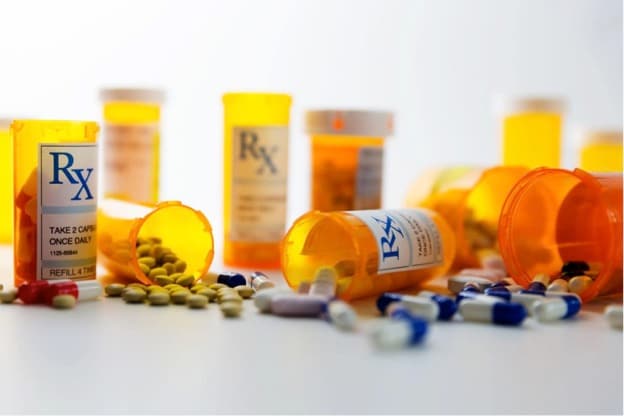Mariana Mazzucato is the director of the UCL Institute for Innovation and Public Purpose and the lead author in a new report on health innovation.
The global pharmaceutical industry is no longer innovating. Research shows that 78 percent of patents approved by the U.S. Food and Drug Administration correspond to medications already on the market, while those disease areas not considered growth markets are ignored. From 2000 to 2011, only 4 percent of newly-approved products globally were designed to treat neglected diseases that affect lower- and middle-income countries.
Part of the problem is how pharmaceuticals use the patent system. Instead of creating new drugs, they extend existing patents beyond the initial 20-year protection set by the United States and use gimmicks, such as overly-wide patents, to block knowledge creation and issue patents for what is essentially the same drug. Losec, for example, which is produced by AstraZeneca to treat heartburn and ulcers, was later tweaked and placed under a new name. This enabled the company to issue a new patent for the barely modified medication, effectively extending the company’s monopoly on this type of drug well beyond the period granted by the original patent.
What’s more, while taxpayers are largely footing the bill for drug research, pharmaceuticals are reaping all the gains. Sofosbuvir, which treats hepatitis C, emerged from over 10 years of U.S. taxpayer-funded research — through the Department of Veterans Affairs and the National Institutes of Health. But when the private biotech company Gilead Sciences later acquired the drug, it priced a 12-week course of pills at $84,000 in the U.S. market. By the end of 2017, Sofosbuvir had generated over $50 billion in sales.
Sofosbuvir is not an exception. The U.S. taxpayer has funded research for every single one of the 210 new drugs that the FDA approved between 2010-16. Yet the companies that have access to this research are increasingly viewing pharmaceuticals in the same way that banks view their financial product — opportunities for short-term returns.
Large pharma companies spend more on share buybacks to boost share prices (and stock options — the main way that executives get paid) than on research and development. Pfizer, for example, spent $139 billion on share buybacks and dividends in the past decade — and just $82 billion on research and development in the same period. (The chief executive’s pay was also a reported $27.9 million in 2017.)
The solution? Apply the same mission-oriented approach used in national defense to health care. The military has historically used public funds to solve problems by interacting dynamically with the private sector, albeit with government direction, with the goal of benefiting the taxpayer.
The mission-oriented approach is what got us to the moon. It also got us the Internet, the microchip, the micro hard drive and voice-recognition software. Those latter inventions came through the United States’s Defense Advanced Research Projects Agency (DARPA), which has what it calls a “singular and enduring mission” to make pivotal investments in breakthrough technologies for national security.
If governments acted with the same urgency and strategic deliberation toward improving health as they do when it comes to national defense, we might be able to transform health care and deliver the next generation of medical breakthroughs to reach the people who need them the most.
Indeed, in the same way the Department of Energy has followed the DARPA model by creating ARPA-E to reimagine the electricity grid, the Department of Health and Human Services (HHS) should introduce a research mission (perhaps called “HARPA”) to stimulate innovation in health care, something Geoffrey Ling, the former director of biotech for DARPA, has called for. This should not be a static, top-down process. The government would set the priorities, but its agencies would follow through to find multiple bottom-up solutions, ensuring that health problems are viewed with the same level of urgency as national security problems so that consumers will have access to the latest innovations.
A more empowered HHS — one better focused on achieving solutions to public health needs — could also strike better deals. For example, it could put pressure on companies, given the benefits that they receive from public funds, to reinvest profits back into innovation rather than using their gains for share buybacks. It could encourage a restructuring of the patent system to stimulate innovation rather than block it. Patents should not be so wide as to stymie all research on a particular illness.
HHS should also push for more transparency among the different actors bearing the cost of research and development. This would make the collective process of value creation more obvious and thus encourage a more informed discussion of pricing as well as research and development financing. Lastly, the government must create the conditions to ensure new drugs remain affordable and easily accessible. While the 1980 Bayh-Dole Act permits the government to cap the prices of publicly-financed drugs, it has never exercised this right.
It is clear that the pharmaceutical business model is one that pursues profits rather than public health objectives. In making forecasts for the biotech and pharmaceutical sector, Goldman Sachs analysts even asked, “Is curing patients a sustainable business model?” Profit-making has become so entrenched in the drug industry that it requires a fundamental transformation — one that compels it to deliver public value and spark genuine market-invigorating innovation. We can do this only if we begin to focus on what really matters: putting patients over profits. As the opioid crisis shows, breakdowns in this system can quickly become a national security issue. Let’s treat matters of health as such.
This was produced by The WorldPost, a partnership of the Berggruen Institute and The Washington Post.





